High Church Liturgy as Antidote to Modern Ills
We’ve found ourselves, dear reader, rather pressed for time. We’ve found ourselves hard of hearing. We’ve found ourselves confused, delirious, unsure of where and how to move. What to do when our iCals are overbooked and the world tries to overbook our ideas? What to do in a world that gives us unlimited choices, and lets those choices become our chains? Easy! Our TV screens tell us to listen to talking heads with all the answers. Our computer screens tell us to destress and watch a little porn. Our governments don’t tell us much of anything, but man, that shiny packaging they wrap it up in is just sublime.
What to do, dear reader, dear friend?
In a world where we’re pulled in 4 directions and told 12 different truths, we must simply say no.
Where do we find the strength and the backbone to make that final, unrelenting “no?” We must rely on prayer. And the prayer most suited to help us give the “no” with which we must answer the claims and promises of today’s world is found in a cloud of incense which wafts through a shaft of colored light; in a silent chapel where whispered prayers rise and a sacrifice is immolated on an altar clothed in snow-white linens.
What does high church liturgy offer us that the world doesn’t? It offers us the transcendental virtues exposed! In the Extraordinary Form of the Roman Rite, the Collects express divine truths; from the Palm Sunday liturgy, “Almighty and everlasting God, by whose ordinance our Savior took flesh and suffered crucifixion to give mankind a pattern of humility, grant us this boon, that, with the lesson of His endurance before us, we may be found worthy to have fellowship in His resurrection.” This is salvation history, presented plainly in a prayer of sacrifice and praise. It offers us goodness; see the Good Friday prayer which wills that governments work towards peace. Above all, it is a vast repository of beauty. The stunning liturgical texts, the complex rubrics, the wealth of sacred music composed for high church liturgies, the complex movements of the sacred ministers, the vaultfuls of sacred art in the form of vessels and vesture— the pageantry of this form of prayer is absent in a world which rejects a convention of consistency.
These liturgies have a clear and elevated purpose— to offer worship to God. There’s no confusion about the purpose of these forms of prayer, because they don’t attempt to ape after the secular. They stand apart as unique because their purpose is singularly so. Our world has begun to forget the importance of purpose. We attend church services that feel more like rock concerts than sacred worship. We’ve forgotten how to use our “fine china;” we’ve forgotten the natural importance of things set apart for something beyond la vie quotidienne. With only an experience of the base, how can we hope to attain the peace only offered by the experience of the divine?
High church liturgy rebels from the false, libertarian freedom of our world. Sacred ministers have an obligation to structure; their own yoke to carry, and one they carry willingly. There are prayers that must be said. There are hymns that must be sung. There are movements that must be made. There are vestments that must be worn. These rites offer a different and more authentic freedom than innumerable choices. The freedom they offer is the freedom to the telos, to the natural ends of human existence; to God.
The modern world likes to spoon-feed us. Things are made eminently accessible; when news is pushed to the front of our screens in a bias we approve of, or restaurants prioritize speed over quality, we are sated instantly, and those who affect this spoon-feeding claim to do so for our own sakes. High church liturgy challenges the participant. The Traditional Roman Rite is entirely in Latin, set apart from any accessible vernacular. The Orthodox Divine Liturgy is held predominantly behind an icon screen, invisible to the worshipper. The prayers in both are complex, of serious linguistic and artistic merit in their own right. Nothing is given away; instead, we are asked, challenged, to come and see, and better ourselves in doing so.
Contradictions abound when God comes into the conversation. The Word, the fullness of glory, comes to us in a stable wrapped in swaddling clothes, the all-powerful Creator dies at the hands of the all-powerless created. It seems to follow, then, that in our most intimate embrace of God in our worship of Him, that these same contradictions would be clear. That could not be further from the truth. Freedom is found in restriction, and challenge is more desirable than ease. At the same time, God is the fullness of reason. It follows equally that these communal prayers have a clear purpose and good, true, and beautiful means and ends. The synthesis of these natures of God is preeminently desirable in a world which barely knows Him.
Dear reader, we’re still confused, overbooked, pressed for time, and chained by choices. In the short time you’ve read this article, your phone has buzzed, the world has offered you its familiar hand. Do you take it? Do we? Dear reader, the world is in desperate need of something greater than itself, and so am I, and so are you. These rites offer it. We would be foolish to reject so great a gift.
Zach Pearson is a sophomore who recently decided he wants to become an avid alpinist. Email him your favorite piece of sacred music at zpearson@nd.edu.
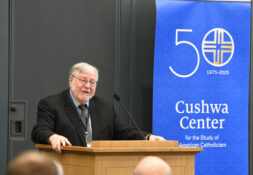
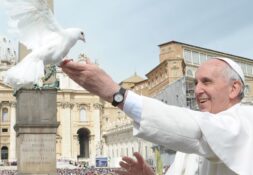
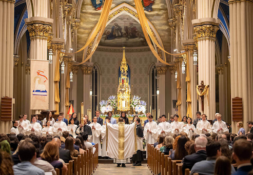
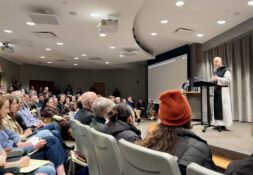
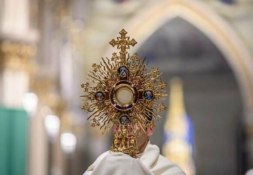

Leave a Reply